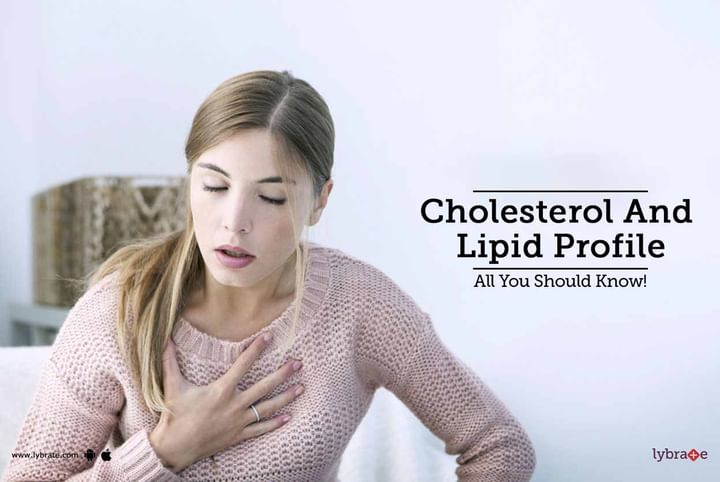Cholesterol And Lipid Profile - All You Should Know!
Cholesterol
Cholesterol is a building block of animals. We have only one type of cholesterol, just as we have one type of water. Animals can walk, swim or fly because their cells have cholesterol. Plants have cellulose instead of cholesterol. It makes them immobile. Everything of every animal, including hair, nails, bone, blood, eggs, meat, skin, wing, milk, etc. always contains cholesterol; and everything obtained from plants is always ‘zero cholesterol’.
Most of our cholesterol is manufactured by our cells. We can get some from food. Our livers can easily excrete excess in bile. Food cholesterol does not raise the blood levels just as buying shirts does not lead to wearing two together.
Triglycerides
Cholesterol does not dissolve in water, so it is called a lipid or fat. Triglyceride is another important lipid. Oil, ghee and meat-fat are mostly triglycerides. Body uses them as fuel. Triglycerides from food enter blood directly as chylomicrons. Other foods go first to liver, and are converted to triglycerides for circulation.
Lipoproteins
Since lipids are insoluble in blood, they are transported with proteins as ‘lipo-proteins’. We have LDL, HDL, and chylomicrons. All lipoproteins contain a mixture of various proteins, fats, and other insoluble substances.
LDL and HDL are made in the liver. Fresh LDL and HDL keep entering the blood, and old lipoproteins are continuously removed. Lipoproteins trap all insoluble dirt, including broken cells and bacterial toxins, and keep our blood vessels clean and healthy. LDL and HDL work together, like mop and bucket. The liver has Kuppfer cells for safely disposing of the toxins they collect and bring.
Our blood has more toxins during illnesses, and more lipoproteins get consumed; blood levels, therefore, drop in every illness. High levels, therefore, predict good health and longer lifespan, but there are exceptions to this rule. Sometimes, there is accumulation of old toxin-filled lipoproteins in blood. Egs: In familial hypercholesterolemia clearance of old LDL by liver is slow. Similarly, alcohol slows removal of HDL; torcetrapib prevents HDL-LDL cooperation. In such situations, high levels of LDL or HDL increase blockages.
Statin medicines help by clearing old LDL from blood, but most lipid medicines just change the blood report without improving health.
Cholesterol and Blockages
Food cholesterol has virtually nothing to do with blockages. Blockages occur because of modern lifestyle. Unlike pre-modern hunter-gatherers who fed on forest foods, we eat a high glucose agricultural diet. Thankfully, our liver does not allow too much glucose into the blood, otherwise, our blood glucose would shoot up to over one thousand after every meal! The liver converts sugars into triglycerides and circulates them as VLDL.
Modern diets keep the liver busy manufacturing triglycerides from glucose; this predisposes us to diabetes and fatty liver. Fasting triglycerides should be less than 150. Higher values suggest that the diet contains too much glucose or alcohol.
Glucose damages artery endothelium, and also changes our LDL to small dense LDL. The cholesterol inside blockages comes from harmful, small dense LDL.
Lipid Profile
Lipid Profiles ‘tests’ are quite popular, but not very helpful. Lipid Profiles have poor predictive value.
The lipids we measure are mostly from liver, not food. Cholesterol, triglycerides and HDL are measured. All the other numbers are usually arithmetic. E.g.: VLDL is triglycerides divided by 5. Additional measurements like apo A, B, Lp(a) etc. do not help much.
Cholesterol levels below 300 are normal. Levels persistently above 300 (or LDL levels above 220) suggest familial hypercholesterolemia. Much lower levels of cholesterol and LDL are presently advocated. The dangerous cholesterol levels have been changed from 350 to 270, 250, 220, 200, 170, 150 etc.; and safe level of LDL is being continuously reduced. These recommendations are motivated. In 1945, a heart disease scare was started in the USA. Large research programs were rolled out to ‘find the cause’ of the ‘number 1 killer’, and they promoted the cholesterol theory the whole world now believes.
High Triglycerides and low HDL is called atherogenic dyslipidemia (blockage causing lipid abnormality). Focus on these for protecting health. They usually stay perfect with a diet low in sugar, starch and alcohol.
Summary
Cholesterol is present in animal bodies for the same reason that wood is present in plants. LDL and HDL are two types of blood cleaning lipoproteins; they are not two types of cholesterol. Both these are good and essential for health. High triglycerides and low HDL are the commonest abnormalities in people prone to heart attacks. These improve with low glucose/fructose diet or exercise. Cholesterol found in blockages is not food cholesterol, it is small dense LDL. Blockages are caused by glucose-rich diets.



+1.svg)
